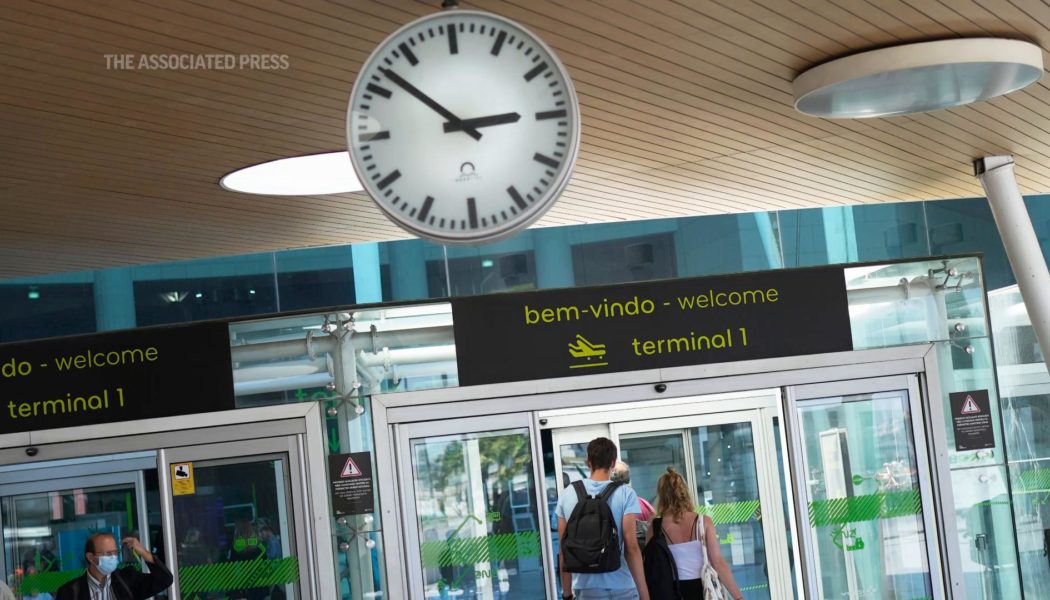
Wait for US passports snarls summer plans
Seeking a valid U.S. passport for that 2023 trip? Buckle up, wishful traveler, for a very different journey before you step anywhere near an airport. (July 3)
AP
When Chanel Sims graduated college, her mom rewarded her achievement by treating her daughter to a trip with Carnival Cruise Line.
But the July 2022 sailing – shortly after her May graduation – didn’t leave Sims much time to get a key travel document: her passport.
Sims, now 24, had never gotten one. She tried once before to study abroad but was dissuaded by long wait times, and traveling internationally for fun wasn’t on her radar.
“I was a broke college student, I wasn’t going anywhere,” said Sims, who lives in Los Angeles and works for a life insurance agency.
Luckily for her, there was an alternative: she sailed with her family from Miami to the Bahamas, Turks and Caicos and back with just her photo ID and birth certificate.
In many cases, travelers can sail without a passport on round-trip voyages from the U.S. Here’s what to know.
What is a closed-loop cruise?
Closed-loop cruises are those that start and end at the same U.S. port and travel within the Western Hemisphere.
U.S. citizens booked on those sailings can leave and enter the country with proof of citizenship such as a birth certificate and – if 16 or older – a government-issued photo ID, according to U.S. Customs and Border Protection.
They can also use an enhanced driver’s license, which denotes both proofs of identity and citizenship, though those are only currently available in Michigan, Minnesota, New York, Vermont and Washington. Travelers can reenter the country from Canada, the Caribbean and Mexico with an EDL, but the documents are only valid for border crossings by sea or land.
Travelers under 16 can show an “original, notarized or certified copy of his or her birth certificate, a Consular Report of Birth Abroad issued by Department of State, (DOS) and/or Certificate of Naturalization issued by U.S. Citizenship and Immigration Services (USCIS),” according to CBP’s website.
However, cruise lines may require you to have a passport anyway.
Regent Seven Seas Cruises, for example, requires passports for all voyages no matter the ports of call or countries visited, and destinations may call for them as well.
Carnival, which Sims sailed with, allows U.S. citizens to sail without a passport on qualifying cruises, but “highly recommends that all guests travel with a passport valid for at least six months beyond completion of travel,” according to its website.
How do I know if I can sail without a passport?
Cruise lines typically provide guidance for travelers on the requirements of their sailing, according to Drew Daly, senior vice president and general manager of travel agency franchise Dream Vacations. A travel adviser can also help fill in any blanks.
Cruising without a passport can be risky, though. The State Department encourages having one “in case of an emergency, such as an unexpected medical air evacuation or the ship docking at an alternate port,” according to its website.
If travelers get stuck at a port of call, there will be “a lot of red tape you have to get through” to make it home without one, said Daly.
In those cases, they should contact the U.S. Embassy and local immigration authorities, he said. Daly also recommended taking a photo of your government IDs, which can be helpful backups when dealing with officials.
A travel adviser can hold travelers’ hands through the process, though Daly noted “it’s not something that happens a lot.”
Sims, for her part, was able to easily get off the ship at ports like Nassau with just her Sail & Sign card, she said, which acts as both a room key and means of charging items to your onboard account. After showing her birth certificate and photo ID during the initial boarding process, she kept them in a suitcase.
There are other advantages to having a passport. For instance, the document gives travelers who don’t board their cruise in time more flexibility to meet the ship at its next stop. “You can’t fly to Mexico without a passport,” Daly said.
Routine processing of passports currently takes between 10 and 13 weeks, and seven to nine weeks for expedited service, according to the State Department. But most travelers who book with Dream Vacations plan their cruises at least six months out, according to Daly, which should give them plenty of time to get one. “So, we still highly encourage that,” he said.
Nathan Diller is a consumer travel reporter for USA TODAY based in Nashville. You can reach him at ndiller@usatoday.com.









